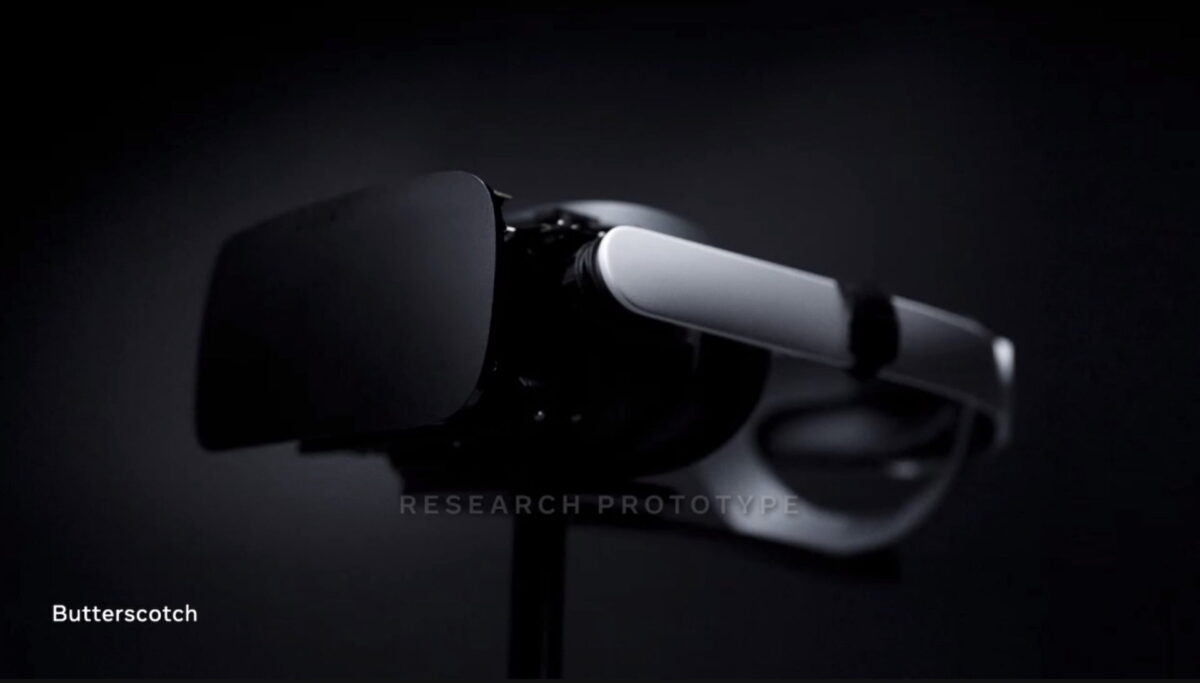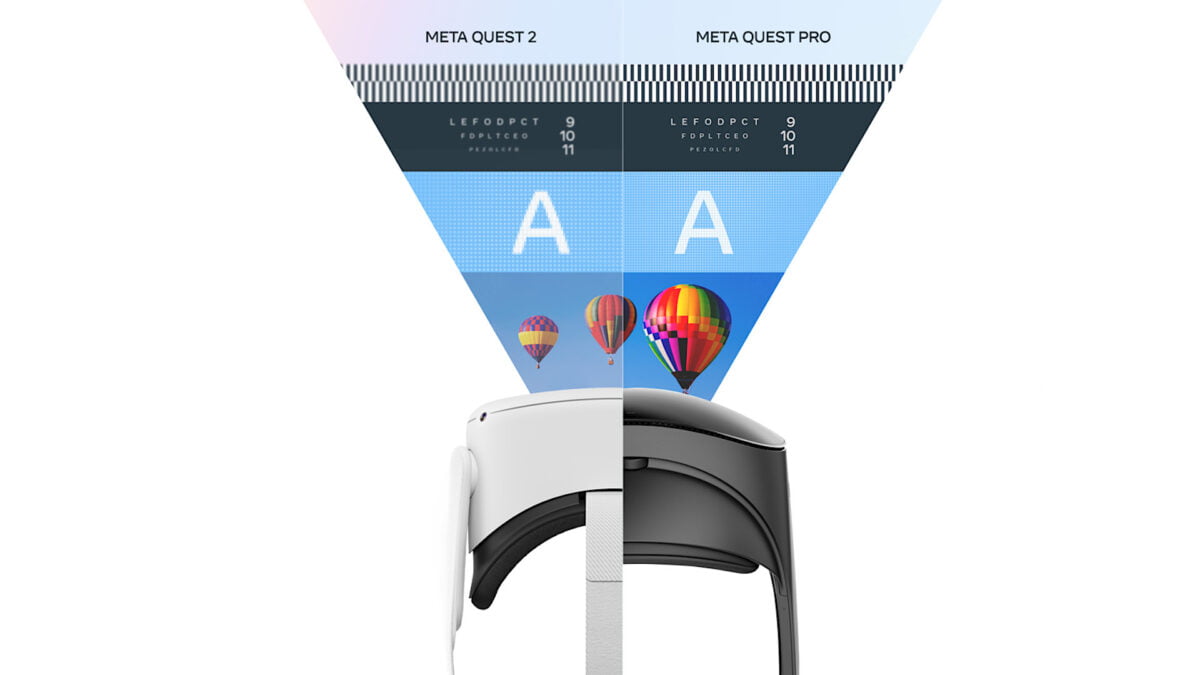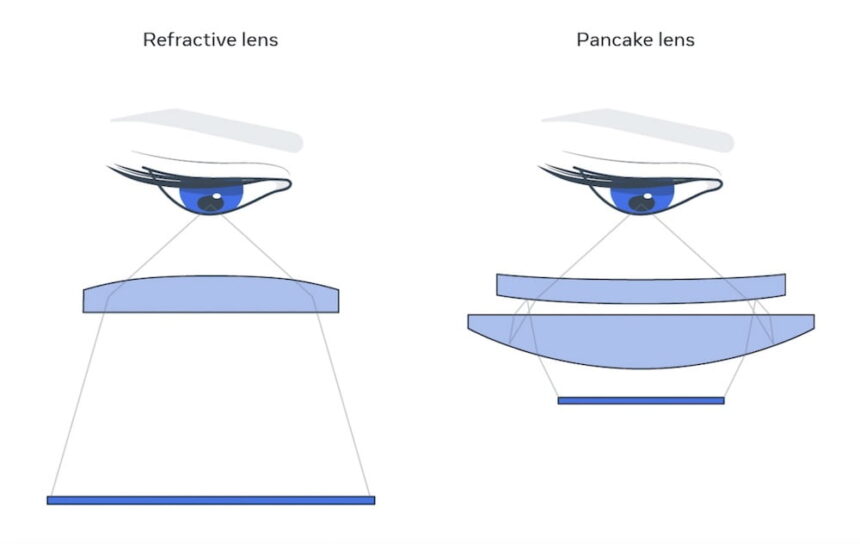Meta wants to one day launch a VR headset with Retina resolution

Meta confirms that it plans to bring a Retina-resolution VR headset to product maturity.
Meta talks about the Meta Quest Pro's new display in detail for the first time and names its product: Infinite Display.
In the same article, Meta also proposes a definition for the visual quality of a VR headset, which Meta will likely use to measure future devices. The field of view is not one of them and is accordingly not covered by Meta.
VR displays are a new kind of screen
The visual quality of a VR headset, Meta points out, is measured by more than just the display resolution. After all, it is the combination of screen and lens that leads to the final image impression.
"VR is vastly different from these other consumer devices. Instead of looking at a large screen at a farther distance, VR users are looking at a smaller screen, much closer to their eyes and magnified by a set of lenses within an optical stack. It’s like looking at a TV through a camera lens—what you’ll see isn’t just determined by the resolution of the screen, but also by the optical properties of the lens, like magnification and sharpness."
Meta proposes a VR-specific metric against which visual quality of corresponding devices can be objectively measured.
This would be determined by several factors, of which the most important are
- the system resolution (measured in pixels per degree, or PPD),
- the sharpness (measured by the modulation transfer function of a lens, or MTF),
- the contrast ratio, and
- color.
Meta addresses how these factors relate to Meta Quest Pro's Infinite Display.
On the road to a VR retina display
Quest Pro has ten percent more PPD than Meta Quest 2, according to Meta (22 vs. 20 PPD). The PPD value takes both the screen and the optics into account and measures the number of pixels that are within 1° of the field of view.
For comparison, the Retina's "resolution" is around 60 PPD and that is also the value Meta is aiming for eventually. In the summer, display researchers presented the Butterscotch prototype (see article picture), which achieves 55 PPD, but only has half the field of view of Meta Quest 2.
"While Butterscotch is a research prototype with a technical configuration that may not make it into a future product, we’re developing high-density displays and high-resolution optical systems in tandem to achieve retinal resolution on our product roadmap," Meta writes.
Meta Quest Pro offers edge-to-edge image sharpness
Next, Meta turns to the sharpness factor, which the company measures in MTF (Wikipedia).
"Measured by MTF, which combines resolution and contrast, sharpness determines how much detail can be reproduced by an optical system. The higher the MTF, the finer the image detail," Meta writes.

The most important factors for visual quality at a glance. | Image: Meta
Here, the quality of the lens plays a major role: "With a flat 2D display like a TV, sharpness is uniform. In VR, it’s not—you have varying degrees of sharpness at the center and edge of the lens. The goal, then, is to achieve a higher MTF at both the center and periphery."
The Infinite Display of the Meta Quest Pro achieves 0.98 MTF in the center and 0.85 MTF in the periphery. An improvement of 25 and 50 percent over Meta Quest 2.
Better contrast, wider color gamut
The contrast factor describes the ratio between the luminance of the brightest white and the darkest black that an optical system can produce on a screen. The higher the ratio, the better the contrast.
Meta Quest Pro offers 75 percent more contrast than Meta Quest 2 thanks to local dimming technology, Meta writes. Three stacks of polarizing films - one on the display and one on each of the two lens elements - further minimize ghosting artifacts.

The difference between Fresnel lens (Meta Quest 2, left) and pancake lens (Meta Quest Pro) | Image: Meta
Finally, Meta addresses the color factor, which is measured by color gamut and color accuracy. Here, too, Meta Quest Pro comes up trumps: Its color space is 30 percent larger than Meta Quest 2.
"We’ve also developed advanced color calibration technology in Meta Quest Pro to ensure the color accuracy and brightness disparity across two eyes. With rich and vibrant colors, Meta Quest Pro is capable of providing premium visual clarity across the full field of view," Meta writes.
Meta's Infinite Display has a long development history
A lot of work went into the development of the Infinite Display: The basic concept, with dual lens and more than ten polarizing filters, was developed over two years, while turning it into a scalable product took a full four years.
"Far from off-the-shelf products, the product team designed truly unique lenses and polarization stacks. While pancake lenses and polarization optics are in themselves nothing new, their application for VR poses unique challenges in productization at scale," Meta writes.
According to Meta, no manufacturer was able to make the parts that required incredibly precise lens and polarization film fabrication and integration. Their product teams had to work closely with the industry over the course of years to create the supply chain from scratch and advance their state-of-art manufacturing capabilities.
For more details on Meta's new headset, see our info article on Meta Quest Pro.
Note: Links to online stores in articles can be so-called affiliate links. If you buy through this link, MIXED receives a commission from the provider. For you the price does not change.